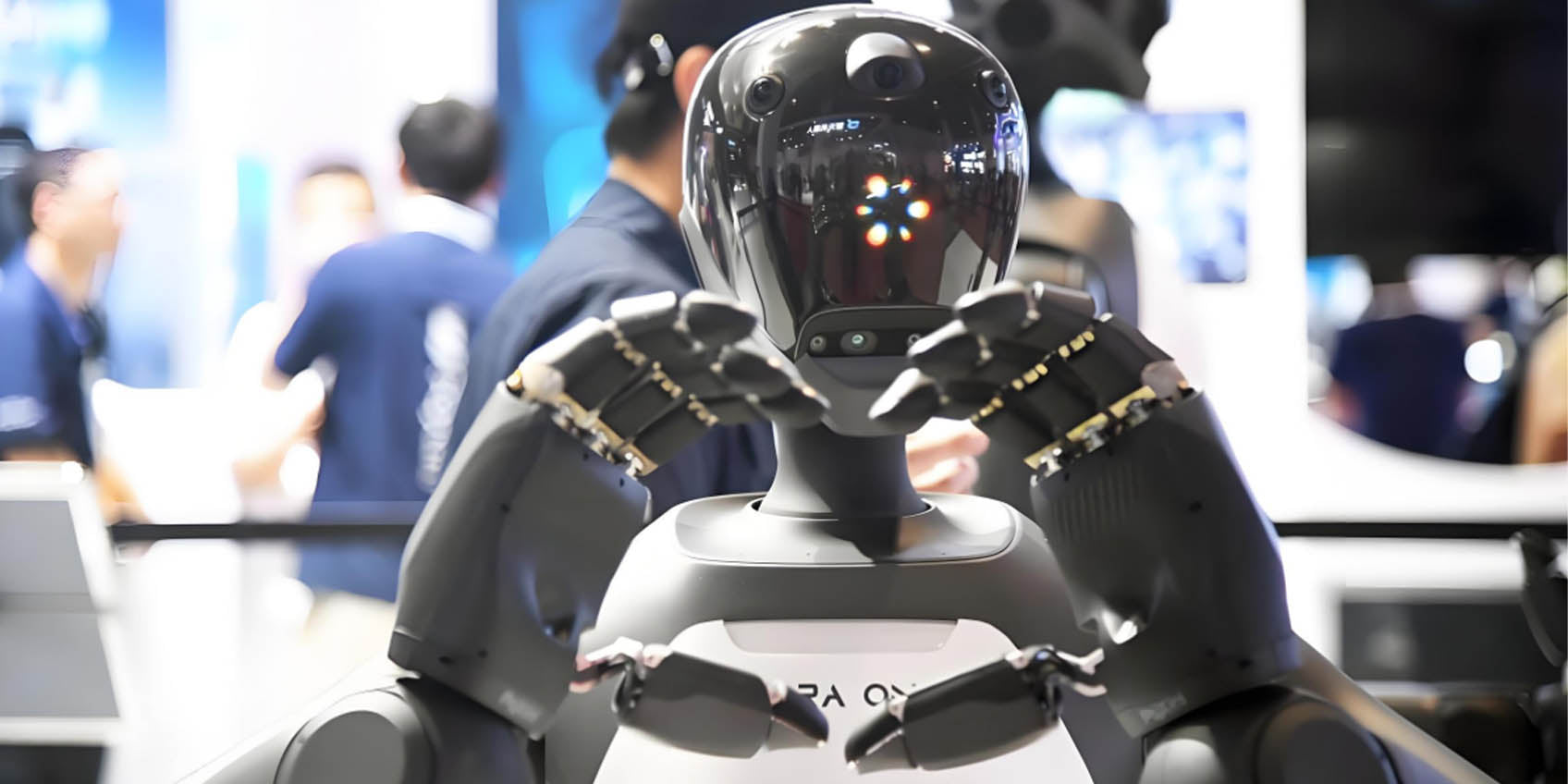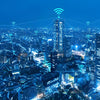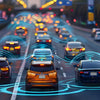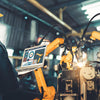TOF Technology in Robot Vision: Enhancing Automation and Precision

The rapid advancement of artificial intelligence (AI) and automation technologies has led to the increasing importance of robot vision systems in intelligent robots. These vision systems allow robots to understand and navigate their environment, perform object recognition, plan paths, avoid obstacles, and complete a variety of tasks.
TOF (Time-of-Flight) technology plays a critical role in enhancing the accuracy, efficiency, and autonomy of these vision systems. As a depth-sensing technology, TOF enables robots to perceive and interact with their surroundings with a level of precision and reliability that was previously difficult to achieve with traditional 2D sensors.
What is TOF Technology?
TOF technology works by emitting light pulses, typically infrared or laser, and measuring the time it takes for the light to travel to an object and return to the sensor. This time is then used to calculate the distance between the object and the sensor, which results in highly accurate 3D depth data. Unlike traditional 2D vision systems, which can only provide a flat image of the environment, TOF sensors offer real-time 3D information, allowing robots to understand the spatial characteristics of objects, their distances, and their relative positions in a much more effective way. This depth information is invaluable for applications that require precision, such as object recognition, path planning, and obstacle avoidance.
Key Applications of TOF Technology in Robot Vision
1. Object Recognition and Localization
In complex environments, robots need to recognize and locate objects with a high degree of accuracy. Traditional 2D vision systems often struggle with depth perception, especially in cluttered or dynamically changing environments. By providing real-time 3D depth data, TOF sensors give robots the ability to recognize objects in space more effectively, ensuring they can determine the exact position, size, and shape of an object. This makes TOF technology particularly valuable in sectors like manufacturing, logistics, and warehouse management, where robots need to handle a variety of dynamic and static objects.
For example, in automated warehouses, robots can identify the location of products on shelves, even if the items are partially obscured or in motion. TOF sensors allow robots to create accurate 3D models of their environment, improving operational efficiency by enhancing object recognition.
2. Obstacle Avoidance and Path Planning
TOF technology plays a crucial role in enabling autonomous robots to navigate through complex environments. In dynamic scenarios, robots must constantly avoid obstacles, adjust their paths, and plan routes to reach their destinations efficiently. TOF sensors provide real-time 3D depth information, helping robots map their surroundings and detect obstacles in their path. This technology allows robots to generate and update 3D maps of their environment, facilitating autonomous navigation by planning and re-planning optimal routes in real-time.
For instance, in smart factories or automated warehouses, robots can easily avoid collisions with workers, other machines, or obstacles, ensuring smooth and safe operations. TOF sensors offer enhanced path planning capabilities by providing accurate and immediate feedback about the surrounding environment, helping robots adapt to changes in real time.
3. Precise Gripping and Manipulation
In industries like automated manufacturing, logistics, and pharmaceuticals, robots often need to manipulate objects with precision. TOF technology helps by providing millimeter-level depth data, enabling robots to identify the exact location, shape, and size of objects. This is especially important when robots are required to handle irregularly shaped objects, pick them up, or arrange them on assembly lines.
Because TOF sensors are not affected by lighting conditions, they can operate in environments where traditional cameras might fail due to reflections, shadows, or low light. This capability allows robots to reliably perform tasks like gripping and sorting in complex environments, such as dark or reflective spaces.
4. Multi-Robot Collaboration
In increasingly automated industries, multiple robots often work together to complete large-scale tasks. TOF technology facilitates this collaboration by providing each robot with real-time 3D depth data of the environment and the positions of other robots. By sharing this information, robots can coordinate their actions, avoid collisions, and synchronize their operations.
For example, in warehouse management, a group of robots may be responsible for transporting goods from one location to another. With TOF sensors, each robot can 'see' and understand where the others are located, preventing accidents and ensuring smooth coordination. This real-time communication and coordination improve operational efficiency, enabling robots to work together seamlessly.
Advantages of TOF Technology in Robot Vision
1. High Accuracy and Precision
One of the standout features of TOF technology is its millimeter-level accuracy. For tasks requiring high precision, such as assembly or quality control, robots must have access to highly accurate depth data. TOF sensors provide precise 3D measurements, enabling robots to perform these tasks with exceptional accuracy. Whether it's placing an object in a particular location or checking the dimensions of a product, TOF technology ensures that robots can perform with high precision, which is essential in industries where even the slightest error can lead to defects.
2. Insensitive to Lighting Conditions
Unlike traditional 2D cameras, TOF sensors are not affected by variations in lighting, such as glare, low light, or shadows. This makes TOF technology ideal for environments with unpredictable lighting conditions, such as outdoor settings, factories, or warehouses. The ability of TOF sensors to function in nearly any lighting environment ensures that robots can operate in various conditions without losing accuracy or performance.
For instance, in smart agriculture or outdoor inspections, robots can use TOF sensors to navigate and interact with their environment, regardless of the time of day or weather conditions.
3. Fast Response and Real-Time Data
The ability of TOF sensors to provide real-time depth data with quick response times is crucial for robots that need to react rapidly to changes in their environment. Whether it's avoiding a moving obstacle or adjusting their path due to environmental changes, robots rely on fast 3D data to ensure their safety and efficiency. TOF technology enables robots to make decisions in real time, which is essential in dynamic environments.
4. Simplified Integration and Lower Costs
Integrating TOF technology into a robot's vision system is straightforward. Traditional 3D sensing systems often require multiple sensors, complex algorithms, and significant processing power. In contrast, TOF technology provides the required 3D depth data with a single sensor, simplifying the overall system design. This simplicity results in lower costs and easier integration, making TOF technology a cost-effective solution for robot vision systems.
Future Prospects of TOF Technology in Robot Vision
As AI, deep learning, and data processing technologies continue to advance, the integration of TOF sensors with robot vision systems will become even more powerful. In the future, robots equipped with TOF technology will be able to analyze the 3D data in greater detail, using machine learning algorithms to improve task performance. Robots will not only navigate their environments with 3D depth perception, but they will also perform complex tasks, such as assembly, quality control, and surgical procedures with greater efficiency and precision.
In sectors like autonomous driving, smart healthcare, and intelligent manufacturing, the combination of TOF sensors and AI will enable robots to perform tasks more accurately, safely, and autonomously. For example, in autonomous vehicles, TOF sensors will help vehicles understand their surroundings and plan paths, while in healthcare, TOF sensors will provide the precise 3D data required for robotic surgeries, leading to safer and more efficient procedures.
Conclusion
TOF technology is revolutionizing robot vision systems by providing precise, real-time 3D depth data that enhances robots' ability to perceive, interact with, and navigate their environments. The benefits of TOF sensors, including high accuracy, independence from lighting conditions, fast response times, and simplified integration, make them invaluable for a wide range of applications in robotics, automation, logistics, and healthcare. As AI and robot vision systems continue to evolve, the role of TOF technology will only grow, enabling robots to perform more complex, accurate, and efficient tasks across industries.
As TOF sensors become more advanced, they will play a critical role in shaping the future of robotics, driving the next generation of autonomous robots that are smarter, more reliable, and capable of tackling an ever-expanding array of tasks. With continuous improvements, TOF technology will push the boundaries of robot vision, creating new possibilities for innovation and transforming industries worldwide.
Synexens Industrial Outdoor 10m TOF Sensor Depth 3D Camera Rangefinder-CS40 Pro

After-sales Service: Our professional technical support team specializes in TOF camera technology and is always ready to assist you. If you encounter any issues during the usage of your product after purchase or have any questions about TOF technology, feel free to contact us at any time. We are committed to providing high-quality after-sales service to ensure a smooth and worry-free user experience, allowing you to feel confident and satisfied both with your purchase and during product use.
-
Posted in
CS40 Pro







